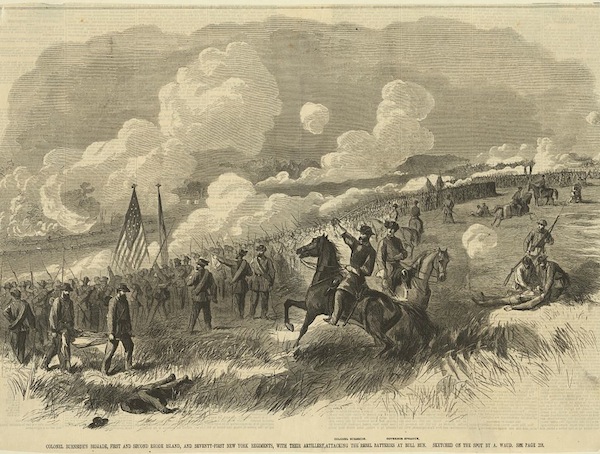
This sketch was made during the battle by Alfred Ward. It depicts Colonel Burnside’s brigade, the First and Second Rhode Island and Seventy-First New York regiments, attacking the rebel batteries with their artillery. Image from the Library of Congress.
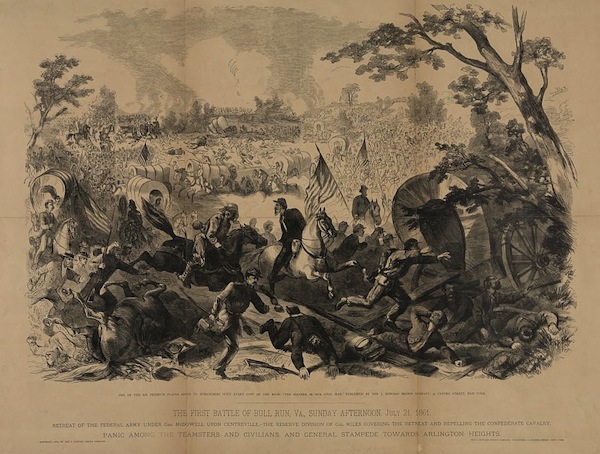
This picture depicts the routing of the Union forces by Rebel cavalry. Many civilians had come from Washington, D.C. to watch the battle, which they thought the Union would win, and were caught up in the panic of retreat. Image from the Library of Congress.
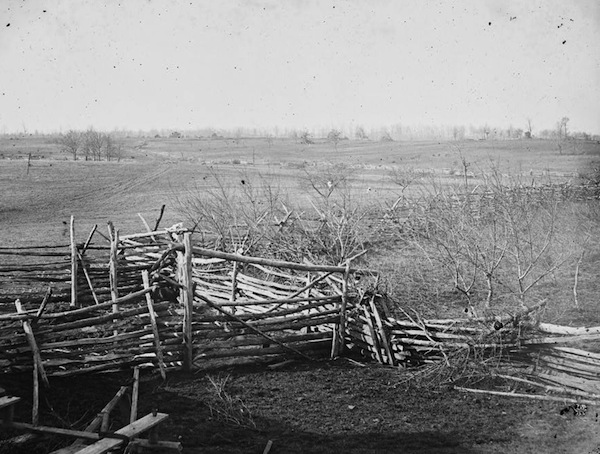
This photograph shows the battlefield. Image from the Library of Congress.
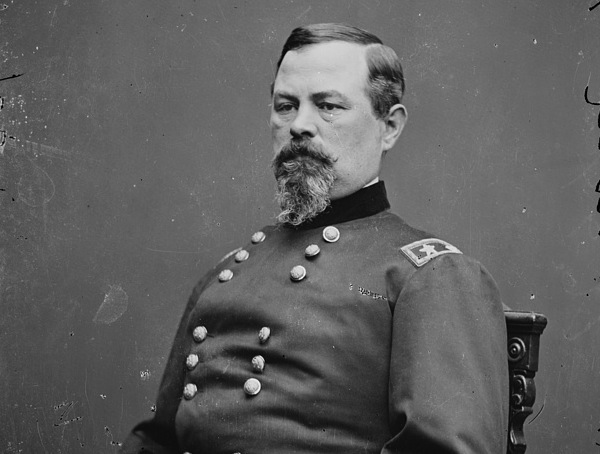
This picture of Union general Irvin McDowell was taken sometime between 1855 and 1865. Image from the Library of Congress.
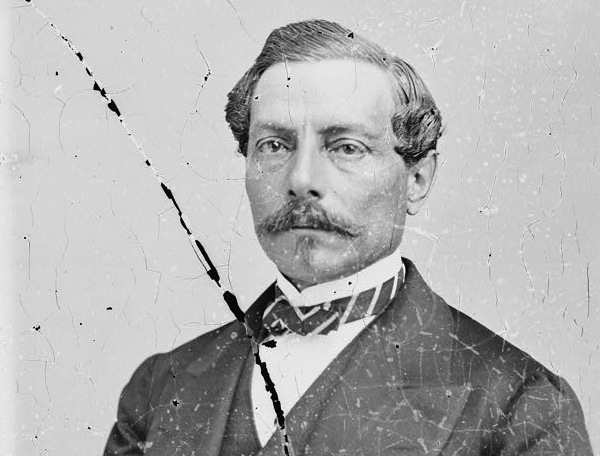
This picture of Confederate general Pierre G. T. Beauregard was taken sometime between 1860 and 1870. Image from the Library of Congress.
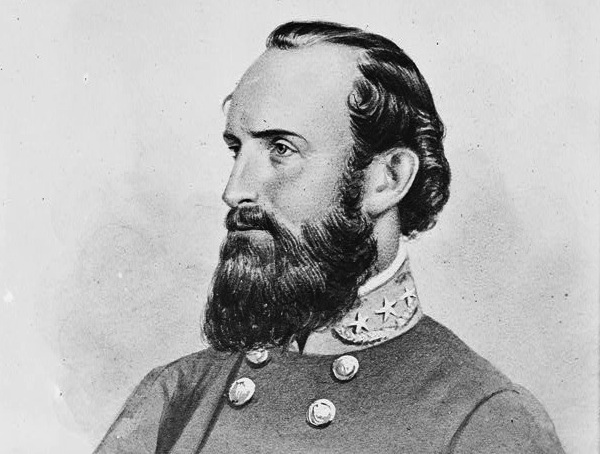
This picture of Confederate general Thomas "Stonewall" Jackson was taken sometime between 1860 and 1870. Image from the Library of Congress.
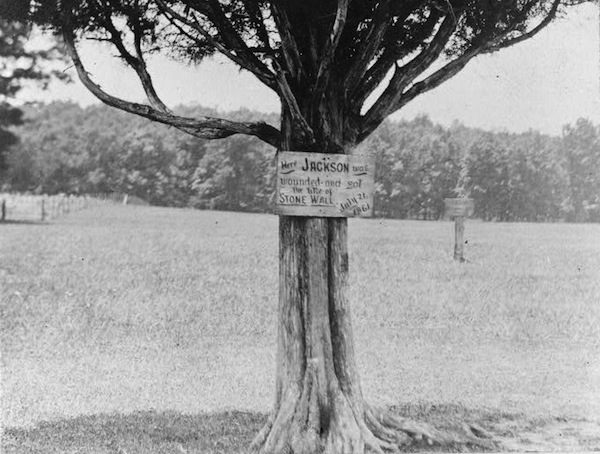
This 1910 picture shows the spot on Henry Hill where General Thomas Jackson was wounded on the battlefield and General Bernard Bee bestowed the nickname "Stonewall" on him. The plaque on the tree says "Here Jackson was wounded and got the title of Stone Wall, July 21, 1861." Image from the Library of Congress.

This picture shows General Beauregard’s headquarters at the McLean House near Mitchell’s Ford. Image from the Library of Congress.
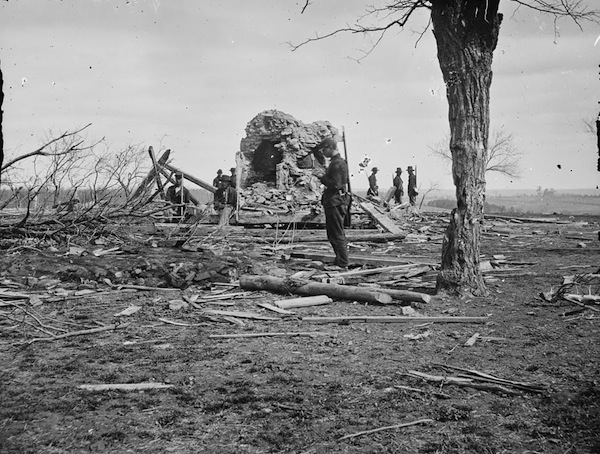
This March 1862 picture shows the ruins of the Judith Henry house, which was heavily damaged during the battle. Image from the Library of Congress.
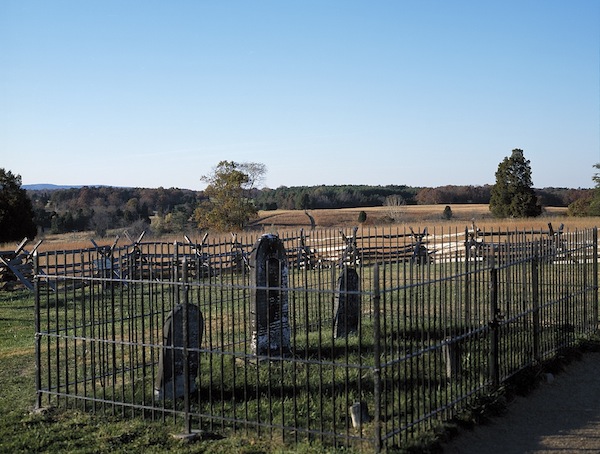
This photograph shows the gravesite of Judith Henry, who was too ill to leave her house and was killed by shells during the battle. Image from the Library of Congress.
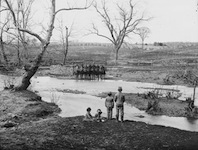
Federal cavalry at Sudley Ford during the battle, July 1861. Library of Congress.
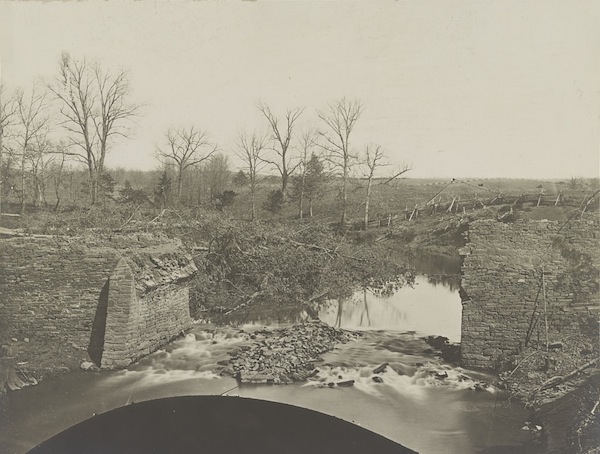
This photograph, taken between 1861 and 1865, shows the ruins of the Stone Bridge over Bull Run. Image from the Library of Congress.
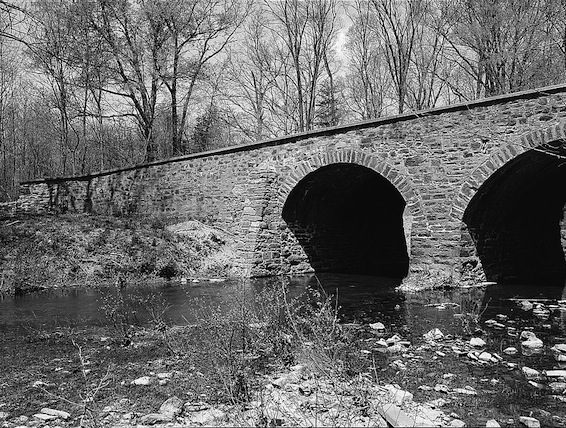
This photograph shows the Stone Bridge over Bull Run. The bridge was rebuilt in 1884 and is of similar design to the original 1825 bridge. Image from the Library of Congress.
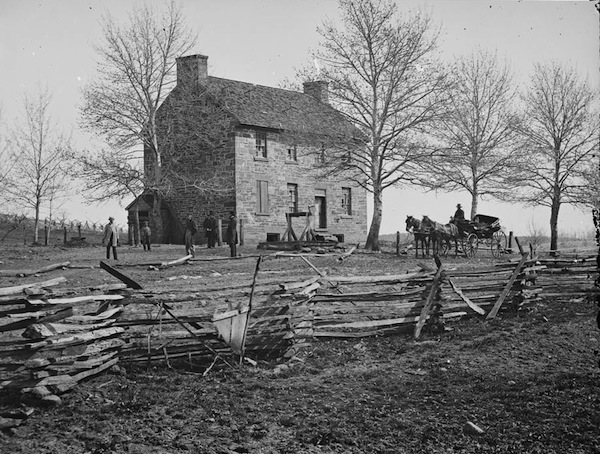
This March 1862 photograph shows the Matthews’ House or the Stone House Tavern. It was used as a hospital during and after both the First and Second Battles of Bull Run and is one of two remaining pre-Civil War structure that still stands. Image from the Library of Congress.
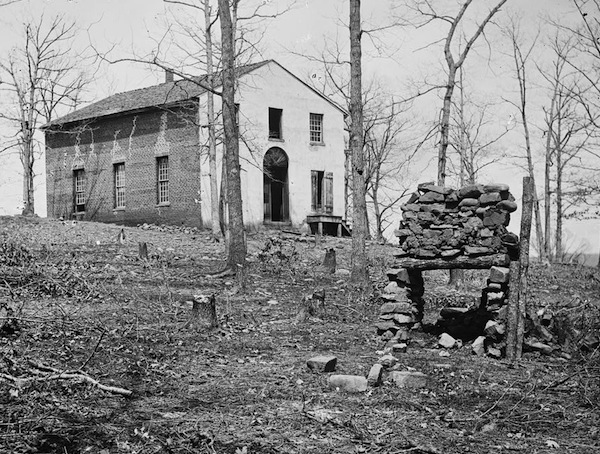
This March 1862 photograph shows the Sudley Methodist Church, near where Union forces crossed Bull Run. It was used as a hospital during and after both the First and Second Battles of Bull Run. It sustained damage during both battles and was razed after the second Battle of Bull Run. Image from the Library of Congress.
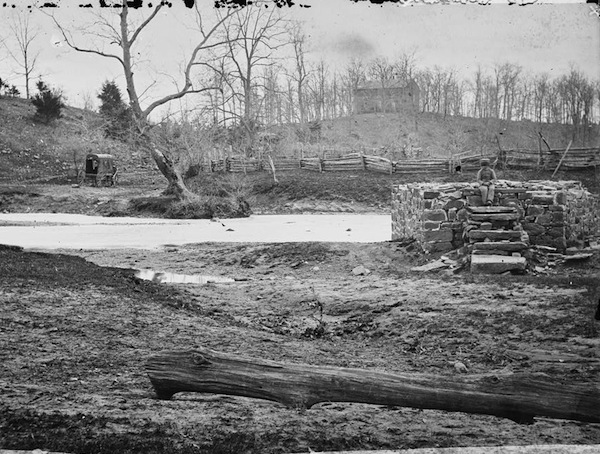
This March 1862 photograph shows Sudley Church on the hill in the background (to the south), Catharpin Run or Little Bull Run, and the ruins of the Sudley Sulphur Spring house. Image from the Library of Congress.
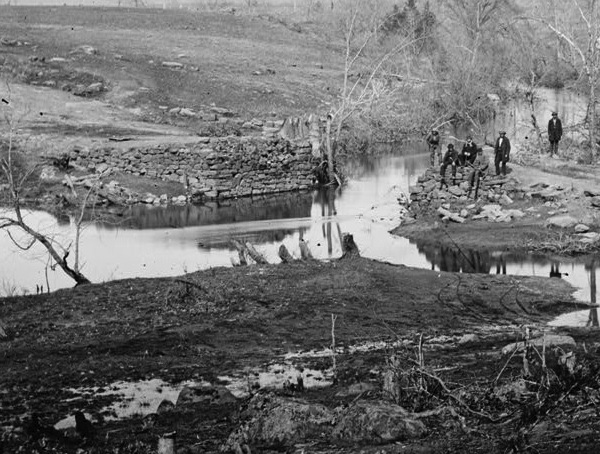
This March 1862 photograph shows the ruins of the bridge over Cub Run. Much of the retreating army had to use this bridge during the retreat to Centreville and while individuals could cross in the creek, the banks of Cub Run are too steep for artillery or wagons. A group of Confederates caught up to the retreating army and trained their artillery on the bridge, launching a shell into the center span. A Union wagon team panicked and overturned their wagon on the bridge, blocking it from further traffic and putting the finishing touches on the panic mounting in the retreating troops. Image from the Library of Congress.
 This sketch was made during the battle by Alfred Ward. It depicts Colonel Burnside’s brigade, the First and Second Rhode Island and Seventy-First New York regiments, attacking the rebel batteries with their artillery. Image from the Library of Congress.
This sketch was made during the battle by Alfred Ward. It depicts Colonel Burnside’s brigade, the First and Second Rhode Island and Seventy-First New York regiments, attacking the rebel batteries with their artillery. Image from the Library of Congress. This picture depicts the routing of the Union forces by Rebel cavalry. Many civilians had come from Washington, D.C. to watch the battle, which they thought the Union would win, and were caught up in the panic of retreat. Image from the Library of Congress.
This picture depicts the routing of the Union forces by Rebel cavalry. Many civilians had come from Washington, D.C. to watch the battle, which they thought the Union would win, and were caught up in the panic of retreat. Image from the Library of Congress. This picture of Union general Irvin McDowell was taken sometime between 1855 and 1865. Image from the Library of Congress.
This picture of Union general Irvin McDowell was taken sometime between 1855 and 1865. Image from the Library of Congress. This picture of Confederate general Pierre G. T. Beauregard was taken sometime between 1860 and 1870. Image from the Library of Congress.
This picture of Confederate general Pierre G. T. Beauregard was taken sometime between 1860 and 1870. Image from the Library of Congress. This picture of Confederate general Thomas "Stonewall" Jackson was taken sometime between 1860 and 1870. Image from the Library of Congress.
This picture of Confederate general Thomas "Stonewall" Jackson was taken sometime between 1860 and 1870. Image from the Library of Congress. This 1910 picture shows the spot on Henry Hill where General Thomas Jackson was wounded on the battlefield and General Bernard Bee bestowed the nickname "Stonewall" on him. The plaque on the tree says "Here Jackson was wounded and got the title of Stone Wall, July 21, 1861." Image from the Library of Congress.
This 1910 picture shows the spot on Henry Hill where General Thomas Jackson was wounded on the battlefield and General Bernard Bee bestowed the nickname "Stonewall" on him. The plaque on the tree says "Here Jackson was wounded and got the title of Stone Wall, July 21, 1861." Image from the Library of Congress. This picture shows General Beauregard’s headquarters at the McLean House near Mitchell’s Ford. Image from the Library of Congress.
This picture shows General Beauregard’s headquarters at the McLean House near Mitchell’s Ford. Image from the Library of Congress. This March 1862 picture shows the ruins of the Judith Henry house, which was heavily damaged during the battle. Image from the Library of Congress.
This March 1862 picture shows the ruins of the Judith Henry house, which was heavily damaged during the battle. Image from the Library of Congress. This photograph shows the gravesite of Judith Henry, who was too ill to leave her house and was killed by shells during the battle. Image from the Library of Congress.
This photograph shows the gravesite of Judith Henry, who was too ill to leave her house and was killed by shells during the battle. Image from the Library of Congress. This photograph, taken between 1861 and 1865, shows the ruins of the Stone Bridge over Bull Run. Image from the Library of Congress.
This photograph, taken between 1861 and 1865, shows the ruins of the Stone Bridge over Bull Run. Image from the Library of Congress. This photograph shows the Stone Bridge over Bull Run. The bridge was rebuilt in 1884 and is of similar design to the original 1825 bridge. Image from the Library of Congress.
This photograph shows the Stone Bridge over Bull Run. The bridge was rebuilt in 1884 and is of similar design to the original 1825 bridge. Image from the Library of Congress. This March 1862 photograph shows the Matthews’ House or the Stone House Tavern. It was used as a hospital during and after both the First and Second Battles of Bull Run and is one of two remaining pre-Civil War structure that still stands. Image from the Library of Congress.
This March 1862 photograph shows the Matthews’ House or the Stone House Tavern. It was used as a hospital during and after both the First and Second Battles of Bull Run and is one of two remaining pre-Civil War structure that still stands. Image from the Library of Congress. This March 1862 photograph shows the Sudley Methodist Church, near where Union forces crossed Bull Run. It was used as a hospital during and after both the First and Second Battles of Bull Run. It sustained damage during both battles and was razed after the second Battle of Bull Run. Image from the Library of Congress.
This March 1862 photograph shows the Sudley Methodist Church, near where Union forces crossed Bull Run. It was used as a hospital during and after both the First and Second Battles of Bull Run. It sustained damage during both battles and was razed after the second Battle of Bull Run. Image from the Library of Congress. This March 1862 photograph shows Sudley Church on the hill in the background (to the south), Catharpin Run or Little Bull Run, and the ruins of the Sudley Sulphur Spring house. Image from the Library of Congress.
This March 1862 photograph shows Sudley Church on the hill in the background (to the south), Catharpin Run or Little Bull Run, and the ruins of the Sudley Sulphur Spring house. Image from the Library of Congress. This March 1862 photograph shows the ruins of the bridge over Cub Run. Much of the retreating army had to use this bridge during the retreat to Centreville and while individuals could cross in the creek, the banks of Cub Run are too steep for artillery or wagons. A group of Confederates caught up to the retreating army and trained their artillery on the bridge, launching a shell into the center span. A Union wagon team panicked and overturned their wagon on the bridge, blocking it from further traffic and putting the finishing touches on the panic mounting in the retreating troops. Image from the Library of Congress.
This March 1862 photograph shows the ruins of the bridge over Cub Run. Much of the retreating army had to use this bridge during the retreat to Centreville and while individuals could cross in the creek, the banks of Cub Run are too steep for artillery or wagons. A group of Confederates caught up to the retreating army and trained their artillery on the bridge, launching a shell into the center span. A Union wagon team panicked and overturned their wagon on the bridge, blocking it from further traffic and putting the finishing touches on the panic mounting in the retreating troops. Image from the Library of Congress.

